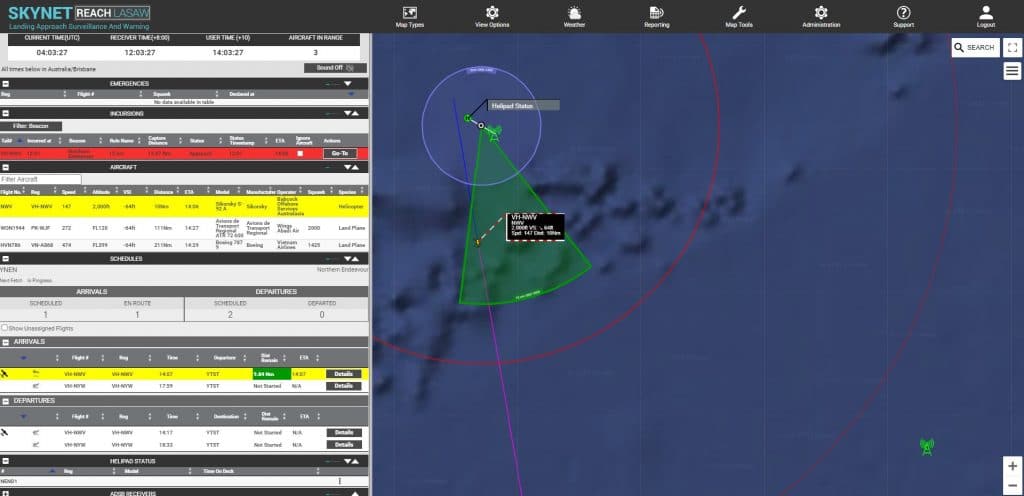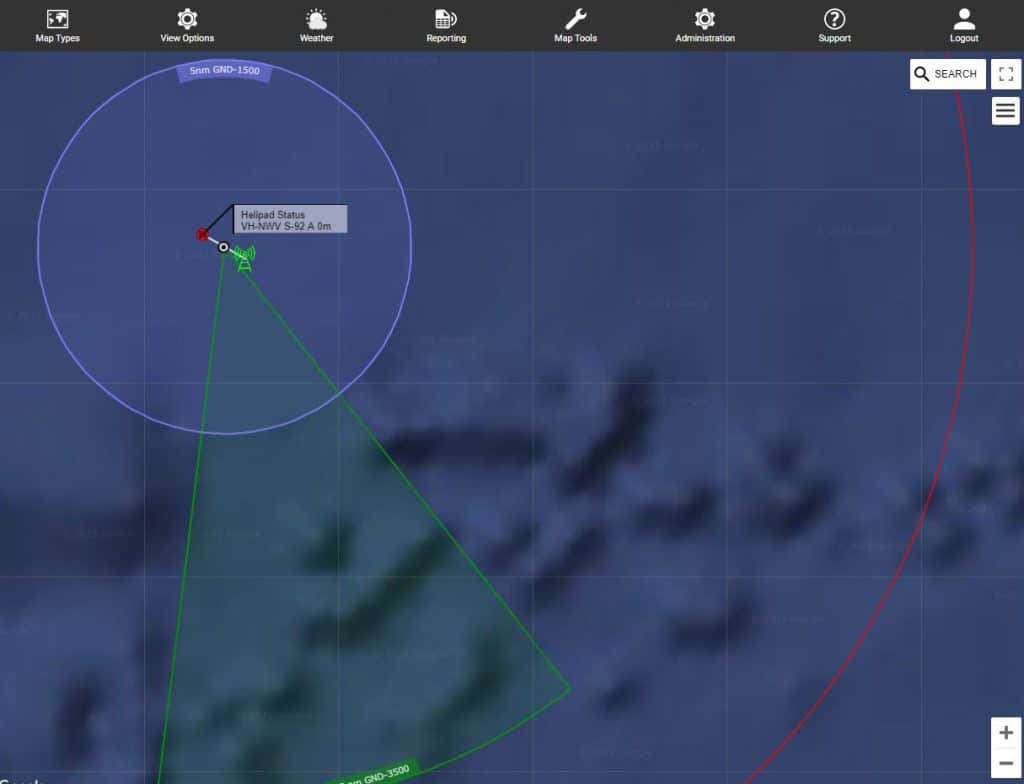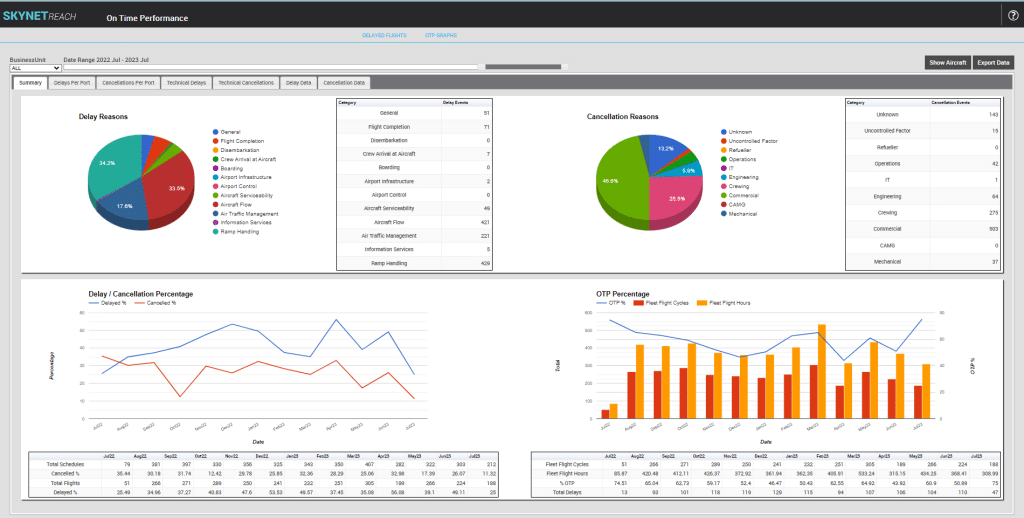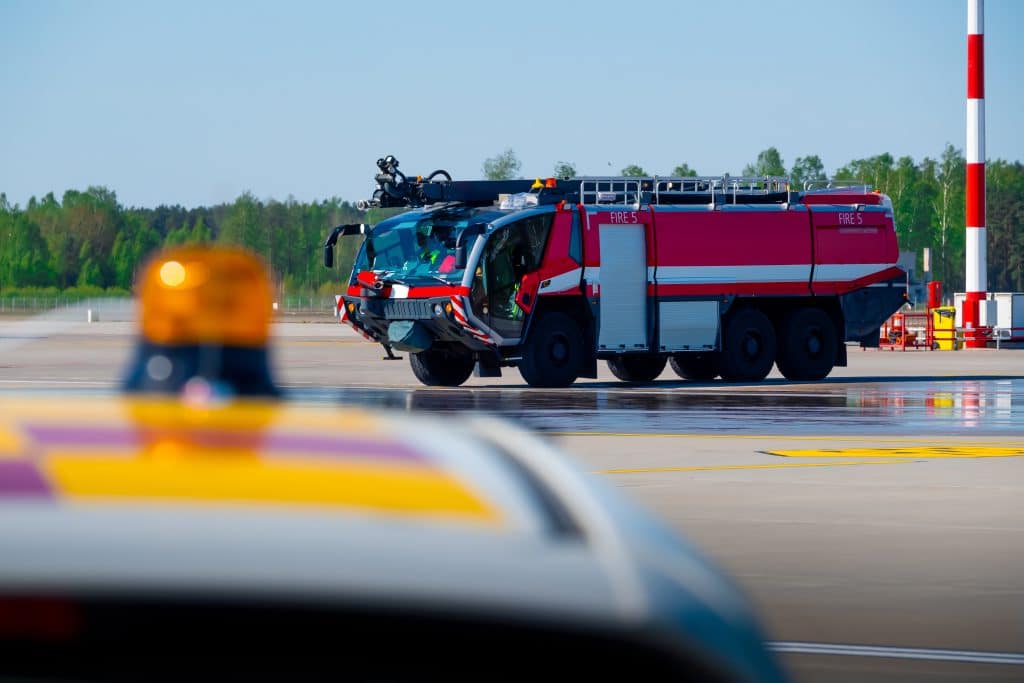SkyNet Aviation is expanding the capability of the REACH LASAW surveillance system with the addition of a Helipad Landing Capacity Status (HLCS) and capacity function. Rolled out in July 2021, the function offers Aeromedical Dispatch teams and Oil & Gas Platform operators a real-time view of:
- which of their helipads are currently being occupied and by whom?
- The capacity limit available when more than one aircraft are landed?
- Which make and model of helicopters are there?
- How long each aircraft has occupied the Helipad?
- The ETA of the next helicopter due to use the helipad/s.

This information is crucial to support the operational and management capabilities in complex or high-duress situations, for example:
- Where the helipad is the only safe landing space. An example use case is an offshore oil and gas rig: having two helicopters arriving at similar time and might require one to loiter for an unsafe period of time while waiting for landing space.
- During a spike in helicopter traffic to a single location. An example use case is a hospital coordinating multiple air-ambulances after an emergency evacuation of a large motorway accident: quality of patient care should depend on triage needs, not whether an incoming helicopter has a landing space.

This new ability to monitor and report on landing capacities in real time is being offered as a standard feature for all LASAW users. While many users will not require it, others showed keen interest when SkyNet Aviation discreetly discussed the near-complete capability with them at RotorTech 2021.
The landing capacity function is just the latest update in REACH LASAW’s continual development cycle. Find out more about LASAW and everything it can do at https://skynetaero.com/get-to-know-lasaw/.



